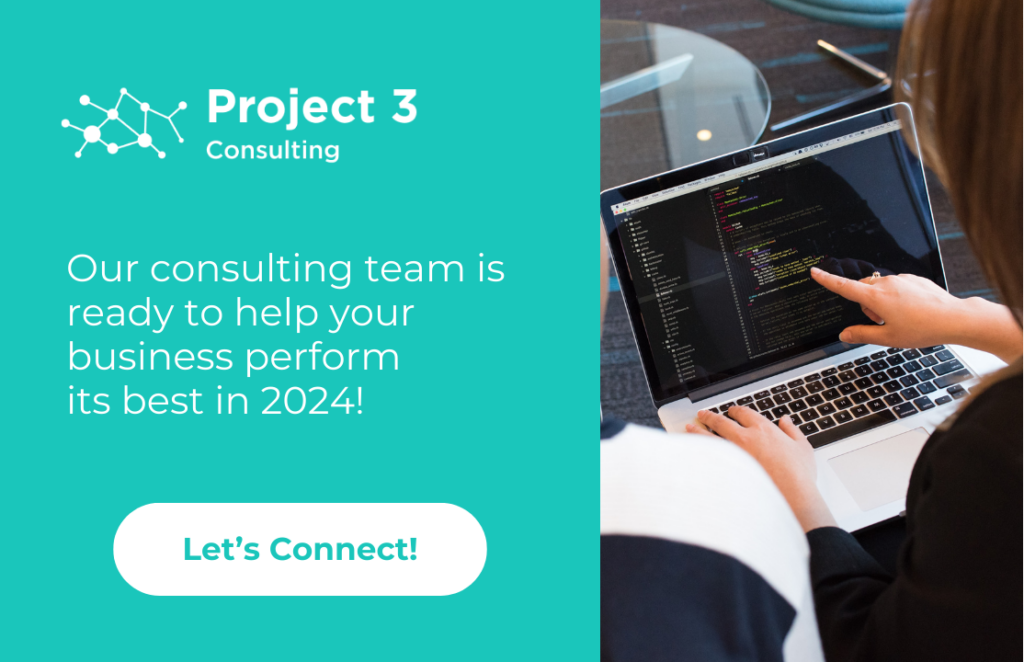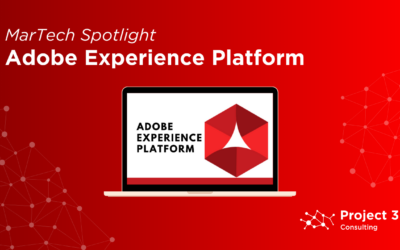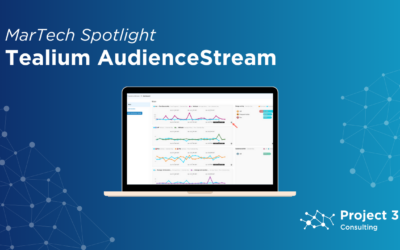
This holiday season, we have a special gift for you—our twelve best MarTech tips of 2023! We reached out to our team of seasoned consultants, asking them to share their expertise, and they’ve wrapped up the year perfectly.
As we finish our 12 Days of MarTech campaign on LinkedIn, we’re excited to present the first six tips that can truly transform your business. Without further ado, let’s unwrap the first half of our MarTech tips and explore how these practices can help you level up your digital marketing game!
MarTech Tip 1: Customer Data Platforms
Personalization is more effective with a Customer Data Platform (CDP) than without one for a few reasons:
- Unified Customer Profiles
- Real-Time Data Updates
- Advanced Segmentation and Targeting
- Cross-Channel Consistency
- Scalability
Unified Customer Profiles
With a CDP, you can create comprehensive and unified customer profiles by aggregating data from various sources, such as website interactions, CRM systems, email marketing, and social media. Without a CDP, this data is often siloed in different systems, making it challenging to gain a holistic view of each customer. Unified customer profiles enable you to have a 360-degree understanding of your customers’ preferences, behaviors, and purchase history. This rich data forms the foundation for more accurate personalization.
Real-Time Data Updates
CDPs provide real-time updates, ensuring that customer information is always current. Without a CDP, you might rely on periodic data imports or manual updates, which can lead to outdated personalization efforts. Real-time data allows you to respond to customer actions and behaviors as they happen, delivering timely and contextually relevant personalized experiences.
Advanced Segmentation and Targeting
CDPs offer advanced segmentation capabilities, allowing you to create highly specific customer segments based on a wide range of attributes and behaviors. Without a CDP, segmentation might be limited to basic criteria available within individual marketing tools. These detailed segments enable you to tailor your messaging and offers with precision, increasing the likelihood of resonating with customers and driving conversions.
Cross-Channel Consistency
CDPs enable cross-channel personalization, ensuring a consistent and personalized experience across various touchpoints, including websites, email, mobile apps, and social media. Without a CDP, personalization efforts may remain fragmented, leading to inconsistencies in messaging and customer experiences. Cross-channel consistency is crucial for building trust and brand loyalty, as customers expect a seamless experience regardless of where they interact with your brand.
Scalability
CDPs are designed to handle large volumes of data and scale with your business as it grows. Without a CDP, managing data and personalization at scale can become cumbersome and inefficient. As your customer base expands, a CDP ensures that personalization efforts remain efficient and effective, maintaining a high level of personalization even with a larger customer dataset.
MarTech Tip 2: First Party Data
What is First Party Data?
This is information you’ve collected directly from your audience – customers, website visitors, social media followers, etc. In other words, you or your business is the “first party” that has collected unique information about your audience directly from your audience.
Leveraging first party data is a crucial aspect of a digital transformation, as it allows organizations to harness their own customer insights for improved decision-making and strategy development. Here are some ways that you can effectively utilize first party data.
- Integrated Data and Breaking Down Silos
- Creating Customer Segments for CRO & Personalization
- Improving Insight-Informed Decision Making
By centralizing segmenting, personalizing, and using first party data to guide decision making, organizations can unlock valuable insights, enhance customer experiences, and drive digital transformation faster and more efficiently. Integrating data-informed practices into your digital strategy enables you to remain competitive and agile, and at the core is first party data.
MarTech Tip 3: Project Management
Digital transformations involve numerous moving parts, from technology implementation to organizational change. A project manager provides a holistic view, ensuring that all components align with the overall goals. They keep the big picture in mind while also managing the intricate details, preventing potential chaos.
Digital transformations are not easy! But they can be smooth sailing if you ensure your project managers have the skills necessary to keep teams aligned and ensure projects are progressing at the right speed in the right direction.

MarTech Tip 4: UTM Parameter Audits
UTM parameters are like the elf on the shelf for attribution, collecting evidence to uncover which digital marketing efforts are being naughty and nice. Their insights help businesses make informed decisions, improve strategies, and accurately attribute success to specific campaigns or channels.
Performing regular UTM parameter audits will validate that your team is applying these valuable tidbits of information appropriately and consistently, helping you make better decisions and ensuring you have an accurate understanding of campaign performance.
MarTech Tip 5: MarTech Automations
MarTech automation – using tools to handle some of the heavy lifting in your digital marketing strategy. To ensure the best use of your team’s time, you should look into automating how technology can work for you and your digital marketing strategy.
Automating your MarTech stack can significantly improve efficiency and effectiveness in your marketing efforts. Here are three steps to get going with MarTech stack automation:
- Start With a Clearly Defined Strategy
- Choose Automation Tools that Fit YOUR Strategy
Some tools you may want to evaluate include HubSpot, Marketo, Salesforce Marketing Cloud, Hootsuite, MailChimp, and Klaviyo.
MarTech Tip 6: Data Hygiene
Did you know that Data Hygiene (cleanliness) reduces operational costs associated with marketing, sales, and customer support efforts? It prevents wasted resources on marketing to incorrect or non-existent addresses, chasing leads with inaccurate contact information, and dealing with customer service issues caused by data errors.
Data cleanliness isn’t a “set it and forget it” thing. You have to be vigilant and consistent. Having processes and tools in place that establish and maintain data hygiene is critical. Regular audits help as well.
We hope that these initial six tips have provided valuable insights to guide your strategic endeavors in the upcoming year. From harnessing the potential of Customer Data Platforms (CDP) for personalized engagement to the utilization of First Party Data, and the role of project management in steering successful digital transformations, we hope these tips offered guidance for navigating the MarTech landscape.
As we look back on the year, we extend our heartfelt appreciation for allowing us to be part of your journey. Thank you for entrusting Project 3 Consulting as your guide through the intricacies of your business goals. Your engagement and support have made this year truly remarkable. We eagerly anticipate continuing this collaborative journey, unraveling more insights, and achieving new milestones together in the coming year.




